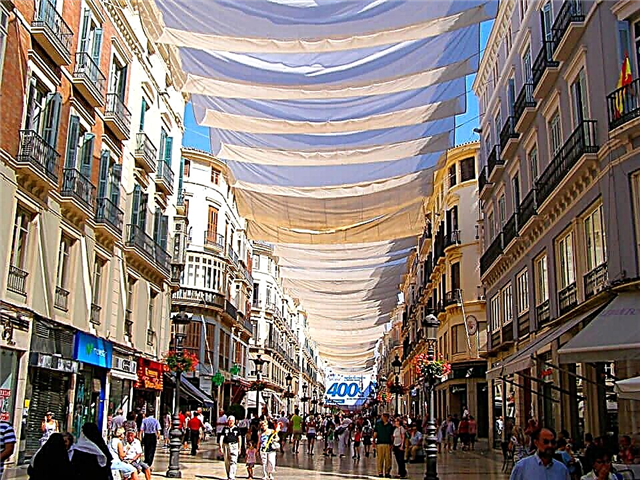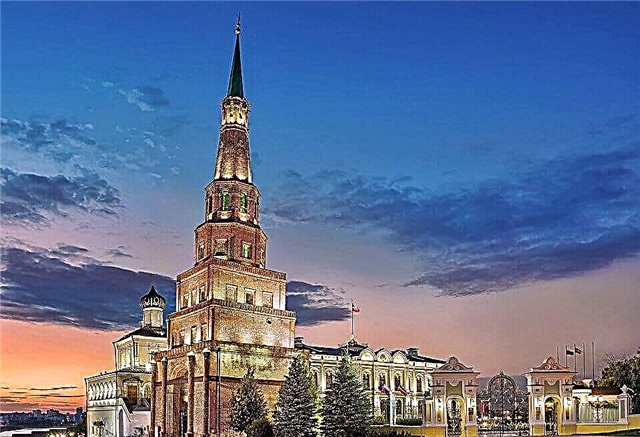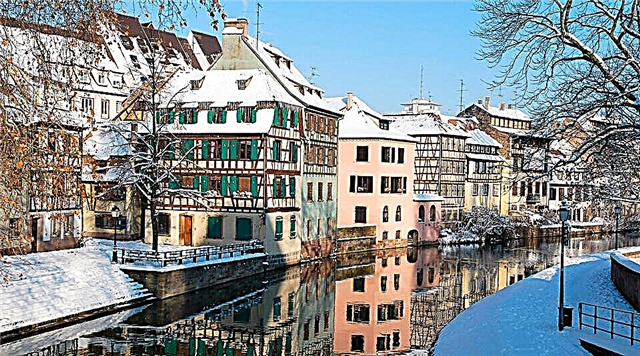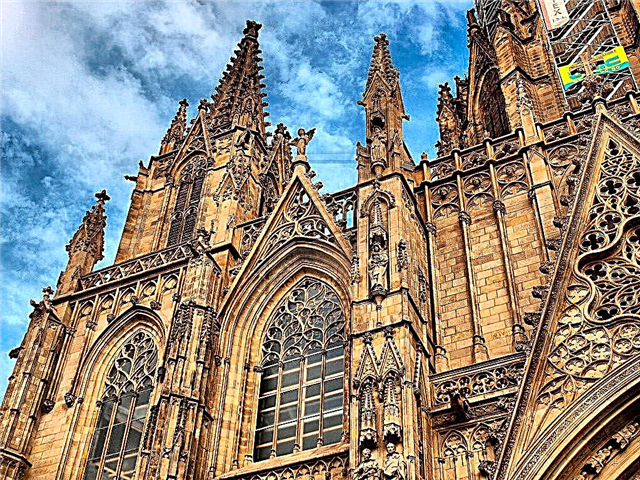Do you have a soft spot for unique and inimitable architectural landmarks? Then welcome to one of the brightest spots on the planet! Today we are talking about Barcelona, but not about its white beaches, which are washed by the warm waters of the Mediterranean Sea and the unusual, even we dare to say, charismatic culture of local residents. There are more storytelling objects in this city. It's about Barcelona Cathedral.
The main attraction of the Gothic Quarter
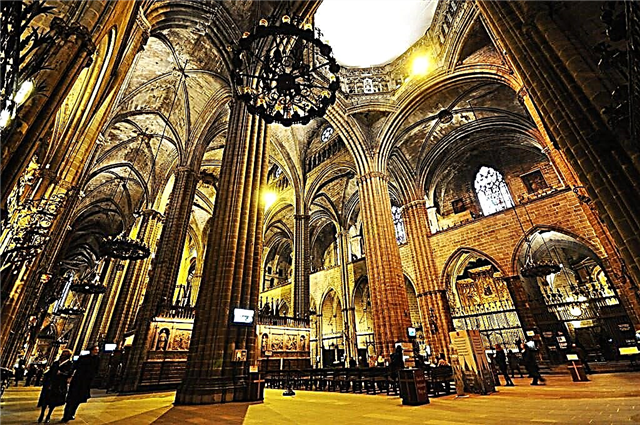
The temple is not in vain considered the center of one of the old quarters of the city. Even those who visit Barcelona for the first time can easily find this truly rich in architectural excesses structure. It is here that a religious idea originates, which has long taken root in the minds and hearts of Catalans, and the cathedral is a kind of religious center. There are always a lot of people here on holidays and weekdays. Numerous tourists mingle with the local townspeople, forming a seething mass of onlookers and history buffs. Here and there you can hear the enthusiastic hooting of lovers of Gothic architecture, which has become an integral part of the centuries-old history of Barcelona.

For those who do not know, the local province has long represented something separate and unique. Although the local area belongs to Spain, the seed of protest has long been sown in the minds of the inhabitants. A true Catalan considers himself independent, and the lands on which he was born will never become part of the Spanish state for him.
Construction history
If you turn to the history of the creation of the cathedral, you will find several interesting facts. First of all, it is worth knowing that this construction, grand in scale and beauty, was erected on the site of a Roman basilica that existed in the distant 6th century. The cathedral is also known under a different name. And numerous guides will gladly tell you about this. The first stone of the Cathedral of Saint Eulalia, who is considered one of the main Christian martyrs and at the same time the most famous patroness of Barcelona, was laid in 1298. It is from this significant date that the grandiose construction of one of the most striking Gothic buildings will begin, which we all were lucky enough to contemplate today.

If you are a connoisseur of architecture of different directions, you can easily consider a combination of unusual approaches of French and Spanish Gothic. This is due to the fact that the construction of the cathedral continued until 1913, when a spire was installed at the top of the tower. Different generations of architects who worked on the future masterpiece worked according to the drawings of the Rouen Cathedral.

Since 877, it is here that the relics of Saint Eulalia are kept. According to historical references, this is a certain young girl who became one of the victims of the inquisitorial views of the rulers of that time. A lot of trials and tortures fell to her lot. In memory of her steadfastness and unshakable faith in Christian ideals, the Cathedral was named.

Architecture
Over the centuries, the cathedral has undergone improvements and changed its appearance. The facade was refined according to old drawings by some of the most noticeable figures of the architectural elite of that time - Mestres and Font. Not only the relics of the holy martyr rest under the arches of the cathedral. Here are buried numerous abbots of the temple, and even the most noble representatives of the local aristocracy. According to legend, Ramon-Berenguer I himself, who is considered the Count of Barcelona along with his wife, is buried in the southern part of the hall. He ruled the lands here from 1035 to 1076. The count's couple rests in an unusually beautiful sarcophagus made of wood, the entire surface of which is painted with extraordinary patterns.

There is another important feature here that will cause a sincere feeling of surprise and delight in everyone present. On the surface of the main altar, under which, according to legend, the relics of Saint Eulalia rest, there is a small gap. If you throw a coin at it, the sarcophagus will sparkle with numerous lights. It's amazing! After all, it was created back in 1339! Are there many places on the planet where you can see such an unusual phenomenon?
Before such an architectural project, even modern masters scratch their heads in surprise. In general, one has only to look around and it becomes obvious that it is not possible to highlight something special or inimitable, unique and truly original in the cathedral. Here, in every pebble, in every little thing, there is a centuries-old history of Barcelona, here and there one can see the brilliant brush of masters of different times.
Interior decoration
The decorative performance of the cathedral choirs is of great interest to numerous tourists. They can look with delight for hours at simply magnificent carvings on objects made of stone and wood, as well as share their impressions of the original forged gratings. The choirs themselves are decorated with coats of arms with gilding of the world famous knights of the Order of the Golden Fleece. They were the guests of honor within these walls and were present at the adoption of many fateful decisions by Charles V.

The Capitular Hall is dedicated to Christ Lepantsky. It is believed that the image of Christ kept in this room accompanied Juan of Austria himself during his famous battle at Lepante. If you try to describe in a nutshell the interior of the cathedral, then for sure the most appropriate epithets would be "majestic" and "strict". The architects who worked to create this masterpiece should be given their due. After all, they managed to skillfully combine not only different directions in Gothic architecture, but also to make a religious accent in all the premises of the temple. What are the huge stained-glass windows, which in themselves can safely claim the title of a unique sight. These are some of the most striking examples of Gothic architecture in Catalonia.

Or maybe this is not a cathedral at all? Could this be a huge treasure box that you can inspect but no one is allowed to take out? Really! Immediately not a single more suitable structure or building that hides in itself so many secrets comes to mind and is willing to share with everyone who entered its doors, secrets that are, without exaggeration, covered with a layer of centuries-old dust. The cathedral never ceases to amaze even those who seemingly explored every inch of this splendor. Sarcophagus, cloister, 26 chapels - this is just a modest list of elements of the decoration of the temple, which are strongly recommended to be studied in the most careful way.

Unusual guests
The cathedral boasts several entrances and exits at once. The oldest one is the one that faces Comtes street. In the inner courtyard of the cathedral, which is called the "cloister", you can proceed through the portals of Saints Eulalia and Lucia. The courtyard leads to the gallery and chapels. It is believed that the chapel of St. Lucia was built even before the cathedral arose on this site. It is in the courtyard that tourists will certainly encounter the unusual inhabitants of the cathedral. Who is this? You will never guess! White geese have been living here for a long time.
According to legend, these birds are called to guard the peace of all those who rest next to the temple. 13 snow-white geese accustomed to numerous visitors can even be fed. Surely, if only they could speak, they would have been expressing their thoughts in French, Spanish, Italian and even Russian for a long time. A huge flow of tourists from different countries contributes to this.

Historical monument
This is the status given to the Cathedral in Barcelona.And he, undoubtedly, deserves this high title, striking all new tourists with its grandiose and masterpiece features. An unusual combination of the Gothic "rosette", which can be observed over the main entrance, and slender columns, from which, like a continuation, the spiers of the towers rush upward and today cause genuine delight and a real feeling of emotion.

From the dome of the cathedral, you will have unprecedented views of Barcelona. The conditional border between the old city and the new quarters is clearly visible, as if two eras are combined into one.
When visiting Barcelona, take the time to plunge into the world of grandiose Catholic Gothic, which combines the most elegant solutions of the great minds of architects, crafted by the skilful hands of the best masters of their time.




